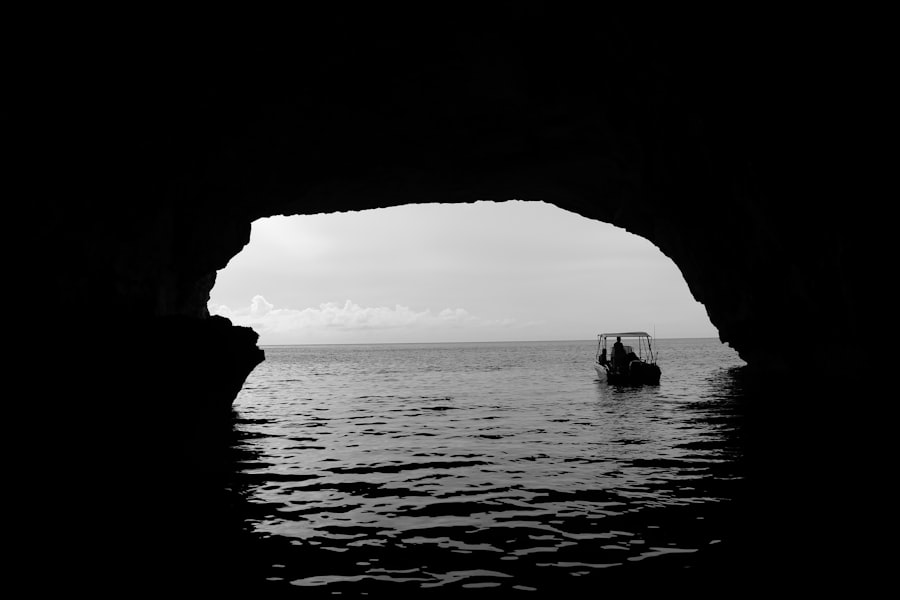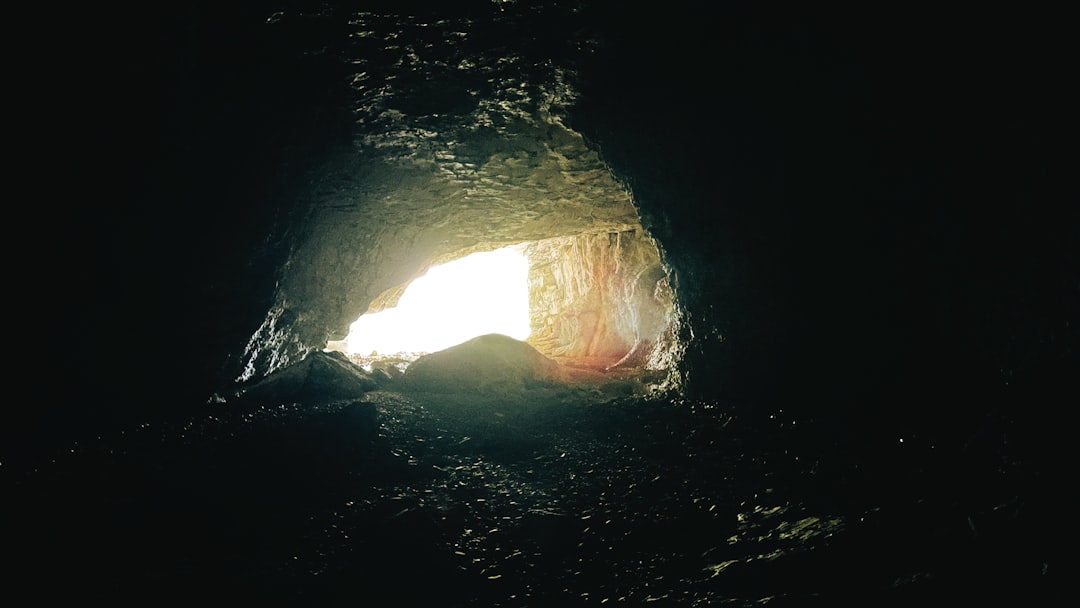The Drake Passage, a body of water situated between the southern tip of South America and Antarctica, is renowned for its tumultuous seas and unpredictable weather patterns. Spanning approximately 800 kilometers (500 miles) in width, this passage serves as a critical maritime route for vessels traveling to and from the Antarctic region. Named after the English explorer Sir Francis Drake, who navigated these waters in the late 16th century, the Drake Passage has long been a focal point for explorers, scientists, and adventurers alike.
Its unique geographical position not only makes it a vital conduit for marine traffic but also a significant area for studying oceanographic phenomena and climate change. The passage is characterized by its deep waters and strong currents, particularly the Antarctic Circumpolar Current, which flows from west to east around Antarctica.
The Drake Passage is not merely a geographical feature; it is a dynamic environment that supports a rich diversity of marine life and serves as a barometer for understanding broader ecological changes. As researchers delve deeper into the complexities of this region, they uncover insights that extend beyond navigation, touching on issues of climate resilience, biodiversity, and the interconnectedness of ocean systems.
Key Takeaways
- The Drake Passage is a treacherous stretch of water between South America and Antarctica, known for its unpredictable and severe weather conditions.
- Historical challenges of navigating the Drake Passage include shipwrecks, extreme winds, and rough seas, making it one of the most dangerous sea routes in the world.
- New research insights into the oceanography of the Drake Passage have revealed its crucial role in global ocean circulation and climate regulation.
- Climate change is impacting the Drake Passage, leading to changes in ocean temperature, ice melt, and shifts in marine ecosystems.
- Advances in technology, such as improved navigation systems and ice-breaking vessels, are making it safer to navigate the Drake Passage, reducing the risks for ships and crew.
Historical challenges of navigating the Drake Passage
Navigating the Drake Passage has historically posed significant challenges to mariners due to its notorious reputation for rough seas and unpredictable weather. The convergence of cold Antarctic waters with warmer currents from the north creates turbulent conditions that can lead to sudden storms and high waves. Early explorers faced these treacherous waters with limited technology and knowledge, often relying on their instincts and experience to guide them through.
Many ships were lost to the fury of the Drake Passage, earning it a fearsome reputation among sailors. The challenges of navigation were not solely physical; they also encompassed psychological aspects. The isolation and vastness of the passage could instill a sense of dread in even the most seasoned mariners.
The stories of shipwrecks and near-misses became part of maritime lore, serving as cautionary tales for those who dared to traverse these waters. As navigation techniques evolved over the centuries, including the advent of more accurate maps and instruments, the passage remained a formidable obstacle. Despite advancements, the Drake Passage continues to test the mettle of modern vessels, reminding navigators that nature’s power is ever-present.
New research insights into the oceanography of the Drake Passage

Recent research has shed light on the complex oceanographic processes occurring within the Drake Passage, revealing its significance in global climate systems. Scientists have employed advanced technologies such as autonomous underwater vehicles and satellite observations to gather data on water temperature, salinity, and current patterns. These studies have unveiled intricate interactions between the Antarctic Circumpolar Current and surrounding ecosystems, highlighting how changes in this region can have far-reaching effects on ocean health and climate stability.
One particularly intriguing finding is the role of the Drake Passage in regulating heat distribution across the globe. The passage acts as a conduit for warm water from the Atlantic Ocean to flow southward, influencing weather patterns in both hemispheres. This heat exchange is crucial for maintaining global climate balance, making the Drake Passage an essential area for ongoing research.
As scientists continue to explore its depths, they are uncovering new insights that could inform climate models and enhance understanding of how ocean currents impact weather systems worldwide.
Impact of climate change on the Drake Passage
| Metrics | Findings |
|---|---|
| Sea Surface Temperature | Increasing trend, impacting marine life |
| Ice Melting | Rapid ice loss, affecting sea level rise |
| Wind Patterns | Changing wind patterns, influencing ocean circulation |
| Marine Ecosystem | Shifting habitats and species distribution |
Climate change has emerged as a pressing concern for the Drake Passage, with rising temperatures and shifting weather patterns posing significant threats to its delicate ecosystem. The warming of ocean waters has led to alterations in marine biodiversity, with some species migrating to cooler areas while others face population declines. These changes not only affect local fisheries but also disrupt the intricate food webs that sustain marine life in this region.
Moreover, melting ice from Antarctica contributes to rising sea levels and alters salinity levels in surrounding waters. This phenomenon can have cascading effects on ocean circulation patterns, potentially impacting global climate systems. Researchers are increasingly focused on understanding how these changes will influence both marine ecosystems and human activities in the region.
The implications of climate change extend beyond environmental concerns; they also raise questions about future navigation routes and safety for vessels traversing the Drake Passage.
Advances in technology for navigating the Drake Passage
The evolution of technology has significantly improved navigation through the Drake Passage, enhancing safety and efficiency for vessels operating in these challenging waters. Modern ships are equipped with sophisticated navigation systems that utilize GPS technology, radar, and sonar to provide real-time data on weather conditions and sea state. These advancements allow mariners to make informed decisions about their routes, minimizing risks associated with sudden storms or rough seas.
In addition to navigation tools, advancements in communication technology have transformed how vessels operate in the Drake Passage. Satellite communications enable ships to stay connected with shore-based support teams, allowing for timely updates on weather forecasts and potential hazards. This connectivity enhances situational awareness and facilitates coordinated responses during emergencies.
As technology continues to evolve, it holds promise for further improving navigation safety in this unpredictable maritime environment.
Strategies for safe navigation through the Drake Passage

Navigating the Drake Passage requires careful planning and strategic decision-making to ensure safety amidst its unpredictable conditions. Mariners are advised to conduct thorough pre-voyage assessments that include analyzing weather patterns, sea state forecasts, and potential hazards along their intended route. Utilizing advanced weather forecasting tools can provide valuable insights into upcoming conditions, allowing crews to adjust their plans accordingly.
Another critical strategy involves maintaining flexibility during transit through the passage. Given its reputation for rapid weather changes, vessels may need to alter their course or delay travel based on real-time conditions. Experienced captains often emphasize the importance of heeding local knowledge and advice from fellow mariners who have recently traversed the passage.
By fostering a culture of safety and preparedness, crews can navigate these challenging waters with greater confidence.
Wildlife and conservation efforts in the Drake Passage
The Drake Passage is not only a vital maritime route but also a rich habitat for diverse marine wildlife. From majestic whales to vibrant seabirds, this region supports an array of species that rely on its unique ecosystem for survival. The presence of krill—tiny crustaceans that serve as a primary food source for many marine animals—highlights the ecological significance of this area.
However, human activities such as fishing and shipping pose threats to these delicate ecosystems. Conservation efforts are increasingly focused on protecting marine biodiversity within the Drake Passage. Organizations dedicated to marine conservation are working collaboratively with governments and researchers to establish protected areas that safeguard critical habitats from overfishing and pollution.
These initiatives aim not only to preserve wildlife but also to promote sustainable practices among industries operating in the region. By raising awareness about the importance of conservation, stakeholders hope to ensure that future generations can continue to experience the natural wonders of the Drake Passage.
Economic implications of navigating the Drake Passage
The economic implications of navigating the Drake Passage are multifaceted, encompassing both opportunities and challenges for various industries. For shipping companies, this passage serves as a crucial route for transporting goods between South America and Antarctica, facilitating trade and commerce in remote regions. However, navigating these waters comes with inherent risks that can lead to costly delays or damages due to adverse weather conditions.
Additionally, tourism has emerged as a significant economic driver in the region, with adventure seekers drawn to the allure of exploring Antarctica via the Drake Passage. Cruise lines offer expeditions that provide travelers with unique experiences while contributing to local economies. However, this influx of tourism also raises concerns about environmental impacts and sustainability practices within fragile ecosystems.
Balancing economic interests with conservation efforts remains a critical challenge for stakeholders involved in navigating this vital maritime corridor.
The future of research and navigation in the Drake Passage
As research continues to evolve in understanding the complexities of the Drake Passage, future studies are likely to focus on addressing pressing issues such as climate change impacts and marine conservation strategies. Collaborative efforts among scientists from various disciplines will be essential in developing comprehensive models that account for changing oceanographic conditions and their implications for global climate systems. In terms of navigation, advancements in technology will play a pivotal role in enhancing safety measures for vessels operating in these challenging waters.
Innovations such as autonomous ships equipped with artificial intelligence may revolutionize how mariners approach navigation through the Drake Passage. By harnessing data analytics and machine learning algorithms, future navigators could optimize routes based on real-time environmental conditions while minimizing risks associated with human error.
Personal experiences of navigating the Drake Passage
Personal accounts from those who have navigated the Drake Passage often highlight both its beauty and its challenges. Many sailors recount moments of awe as they witness breathtaking landscapes juxtaposed against turbulent seas—a reminder of nature’s raw power. The camaraderie among crew members during difficult passages fosters bonds that last long after their journeys conclude.
However, these experiences are not without their trials. Sailors frequently share stories of battling fierce storms or encountering unexpected obstacles that tested their skills and resolve. Such narratives underscore the importance of preparation and adaptability when navigating this unpredictable maritime environment.
Ultimately, personal experiences serve as valuable lessons for future generations of mariners who aspire to traverse these storied waters.
The significance of new research insights for navigating the Drake Passage
In conclusion, new research insights into the oceanography of the Drake Passage hold profound significance for both navigation and environmental stewardship in this vital maritime corridor. As scientists continue to unravel the complexities of this region’s ecosystems and climate dynamics, they provide essential knowledge that can inform safer navigation practices while promoting conservation efforts.
As awareness grows regarding climate change impacts on marine environments, stakeholders must prioritize sustainable practices that protect both wildlife and economic interests within this remarkable region. Ultimately, understanding the significance of new research insights will empower future generations to navigate not only through challenging waters but also toward a more sustainable future for our oceans.
In recent years, the Drake Passage has garnered significant attention from researchers due to its crucial role in global ocean circulation and climate regulation. A related article that delves into the intricacies of this vital waterway can be found on MyGeoQuest. This article provides insights into the latest findings and ongoing research efforts aimed at understanding the complex dynamics of the Drake Passage. For more detailed information, you can explore the article by visiting this link.
WATCH NOW! Drake Passage: Earth’s Deadliest Waters Revealed
FAQs
What is the Drake Passage?
The Drake Passage is the body of water between the southern tip of South America at Cape Horn and the South Shetland Islands of Antarctica. It is known for its rough seas and strong winds, making it a challenging area for navigation.
Why is research conducted in the Drake Passage?
Research in the Drake Passage is important for understanding the dynamics of the Southern Ocean and its impact on global climate. The passage is a key location for studying ocean circulation, marine life, and the exchange of heat and carbon between the ocean and the atmosphere.
What are some key research areas in the Drake Passage?
Some key research areas in the Drake Passage include studying the Antarctic Circumpolar Current, which is the largest and most important current in the world, as well as investigating the impact of climate change on the region’s ecosystems and marine biodiversity.
How is research conducted in the Drake Passage?
Research in the Drake Passage is typically conducted using research vessels, autonomous underwater vehicles, and oceanographic instruments such as moorings and floats. Scientists also use satellite data and computer models to study the region.
What are some recent findings from research in the Drake Passage?
Recent research in the Drake Passage has provided insights into the role of the Southern Ocean in regulating global climate, the impact of melting ice shelves on ocean circulation, and the biodiversity of marine life in the region. These findings have important implications for understanding and predicting the effects of climate change.
